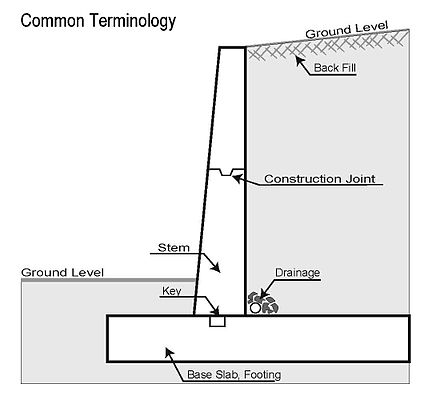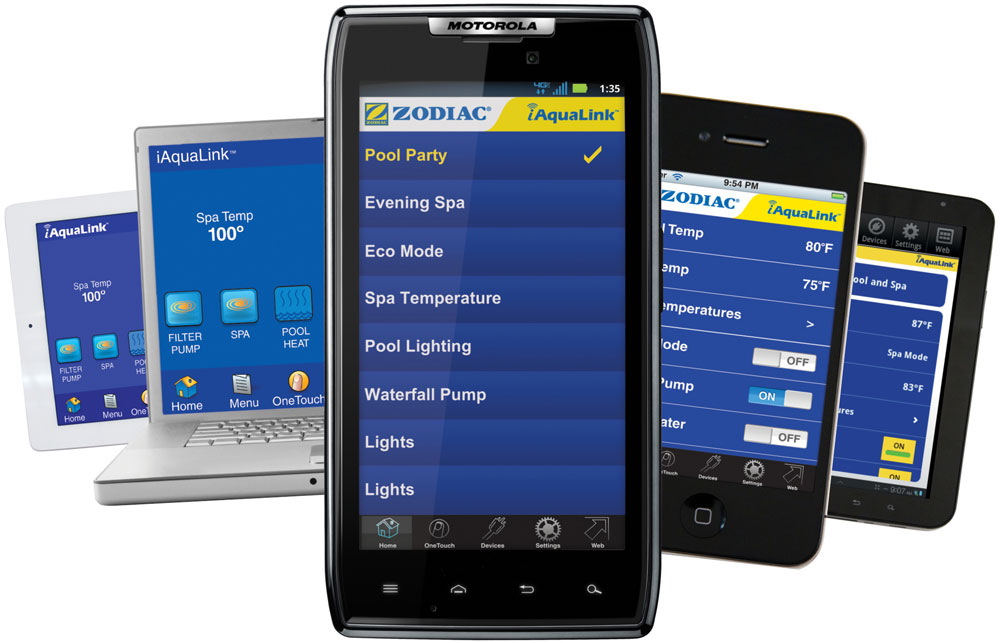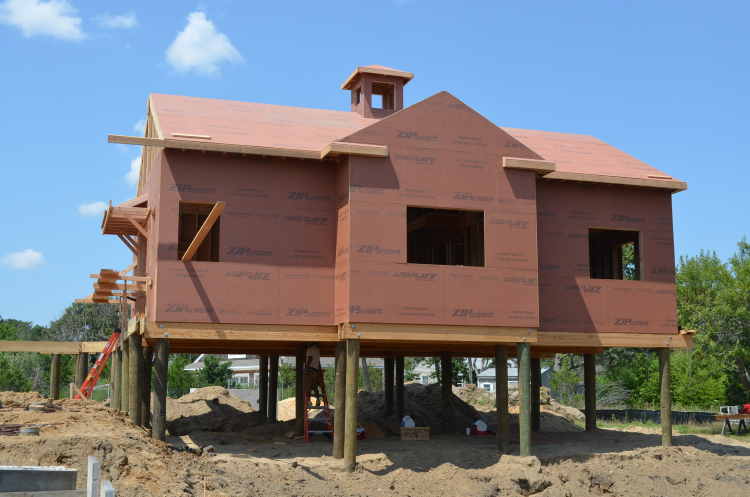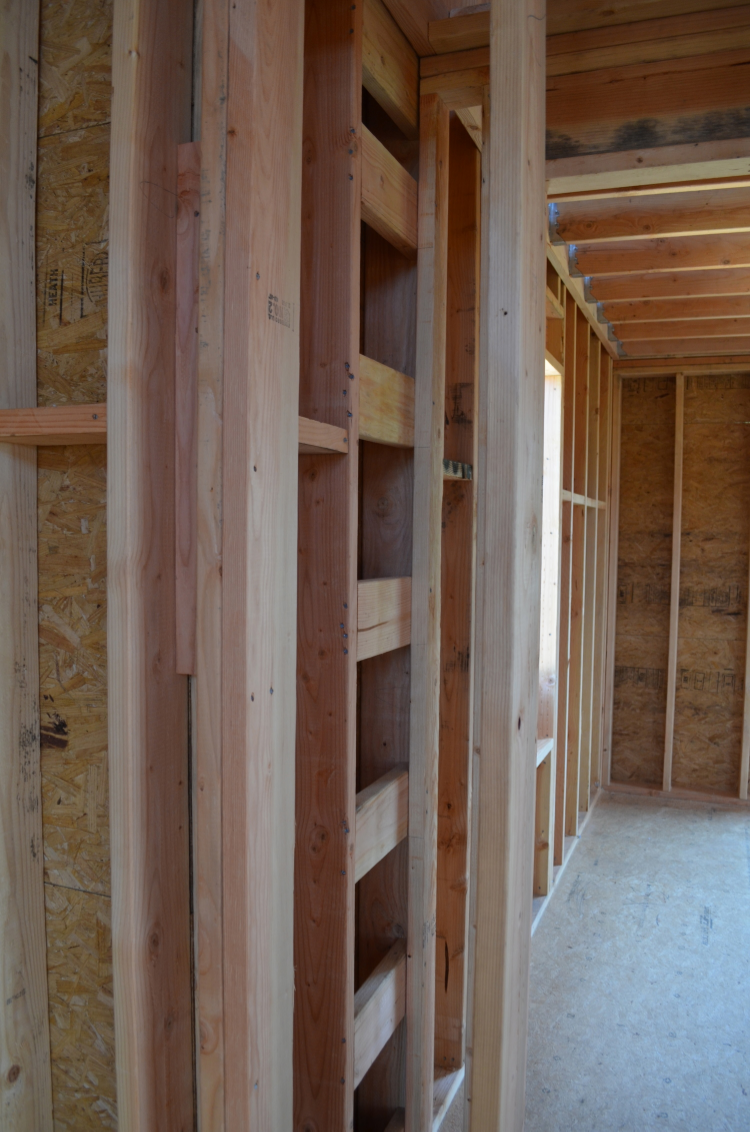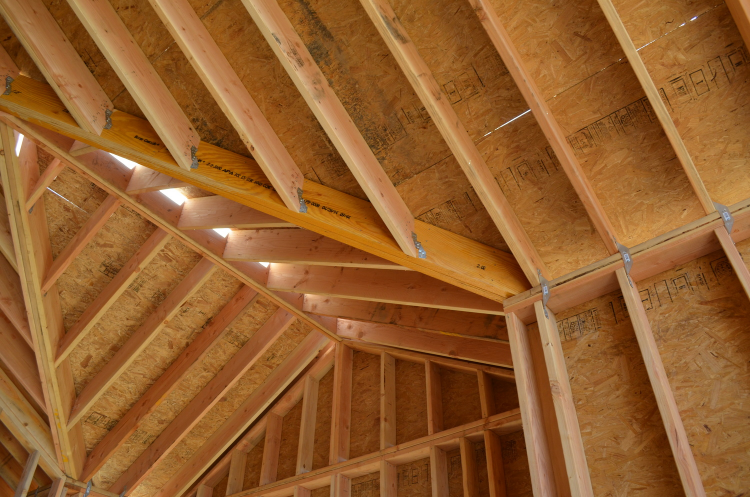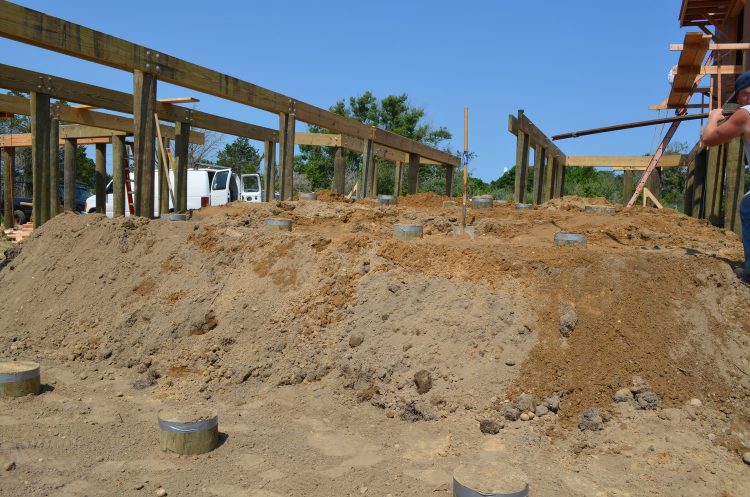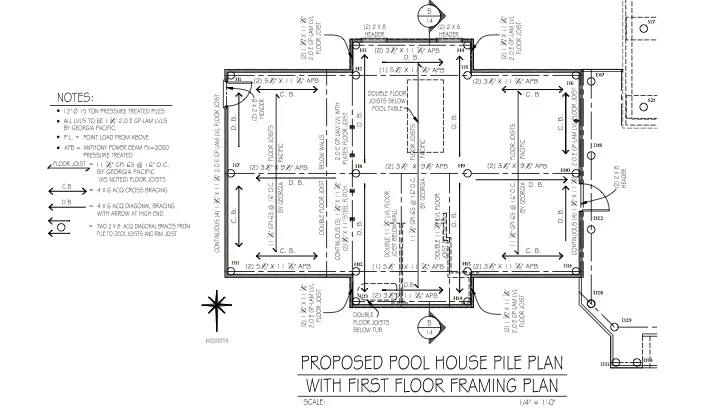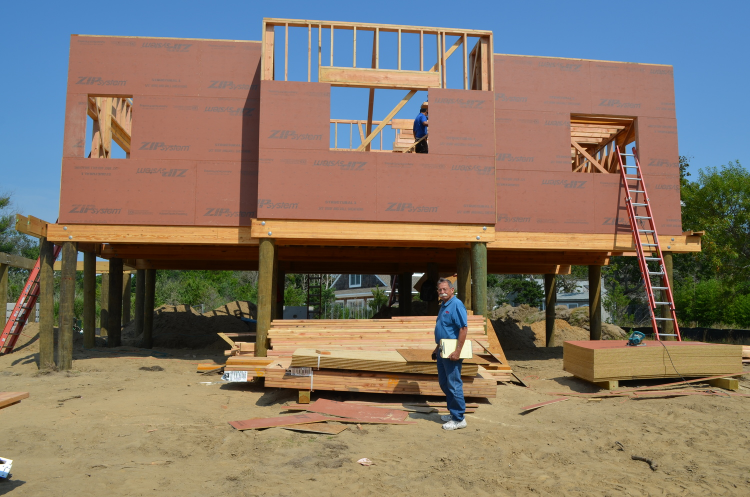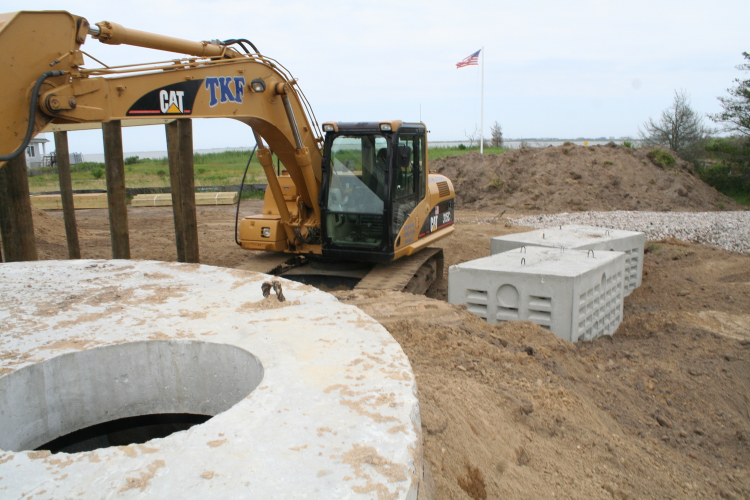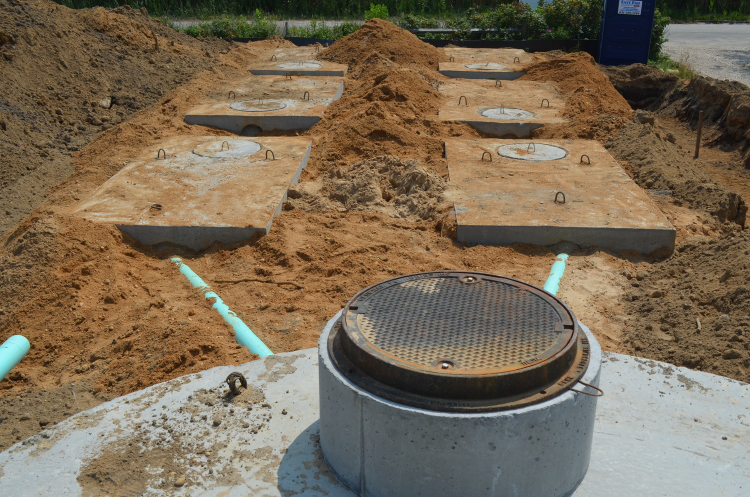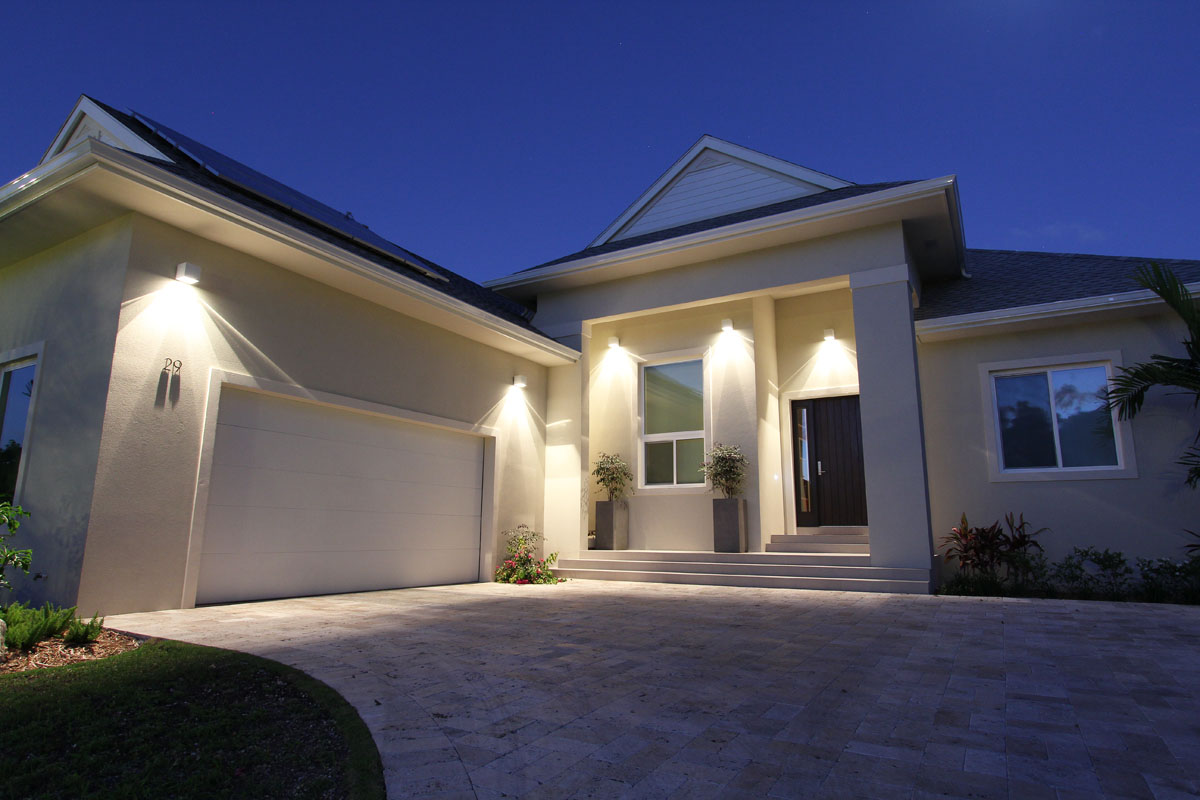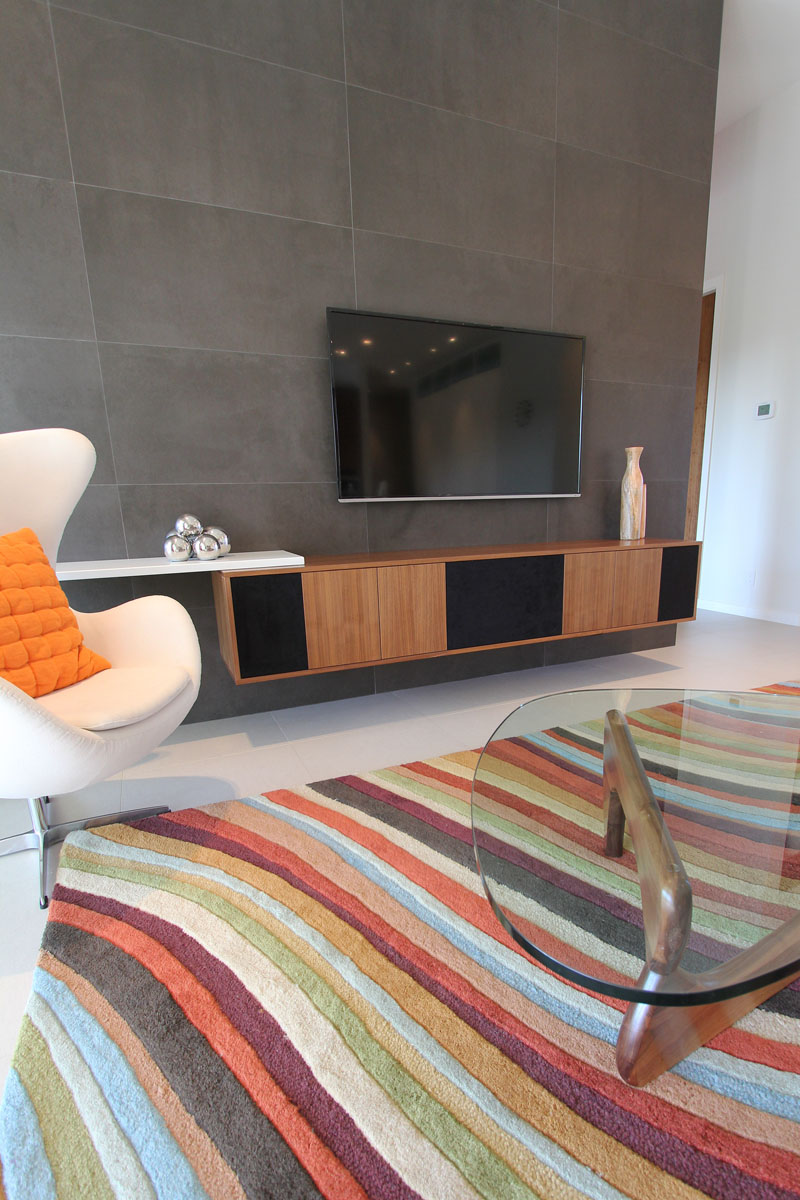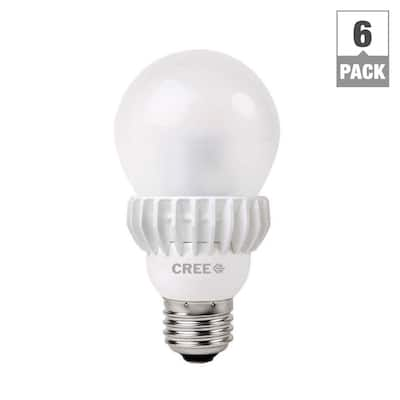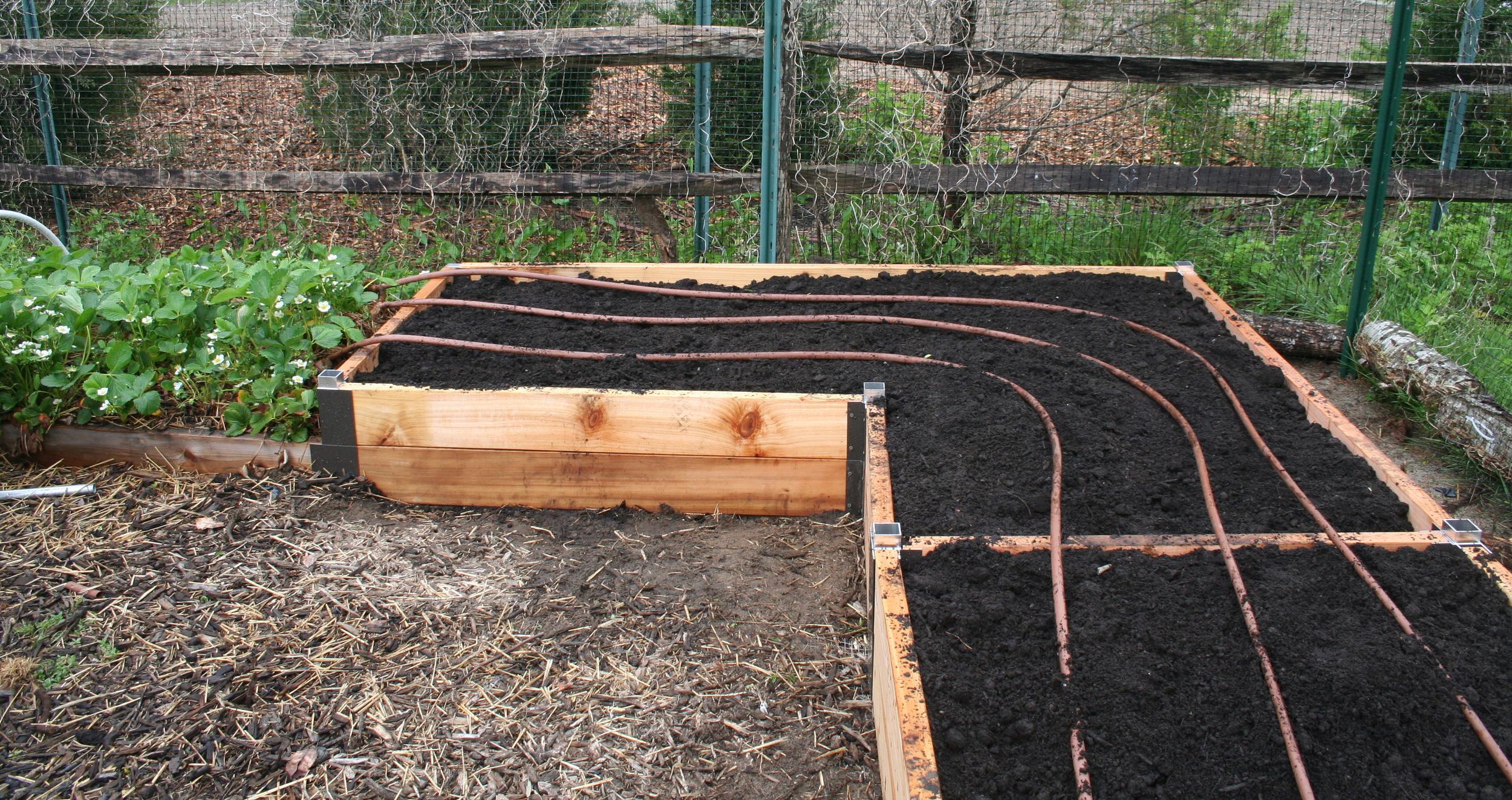Naturally, having lost our home due to flood, we've spent a lot of time thinking about water. But lately, we've also been thinking about fire safety. While our house was rendered uninhabitable by Hurricane Sandy’s storm-surge induced flood waters, 135 homes in Breezy Point, NY and several in Greenwich, CT were destroyed by fire in the same storm.
According to the U.S. Fire Administration (a division of FEMA), "More than 3,400 Americans die each year in fires and approximately 17,500 are injured. An overwhelming number of fires occur in the home. There are time-tested ways to prevent and survive a fire. It's not a question of luck. It's a matter of planning ahead."
Building codes mandate the installation of smoke detectors, and the Sunset Green Home is going the extra step of having them tied into our home security system's central monitoring service. But, for a two-story single family residence, should we be doing more to plan ahead? Would it make sense to install a residential fire sprinkler system? How should we evaluate the choice to do so?
We can think about the decision in terms of the Triple Bottom Line, which goes beyond a traditional economic-only bottom line analysis to include an assessment of the value in terms of environmental impact and impact on people (see my earlier post for more of the vocabulary of sustainability).
In terms of economics, Newport Partners’ 2013 Home Fire Sprinkler Cost Assessment report examined 51 homes in 17 communities and found that the average system cost was $1.35 per sprinklered square foot (down from $1.61 in 2008). At just under 5,000 square feet (considering the main residence and an accessory structure on the site of the project), that's somewhere around $6,750 in total for the system (though we received one bid at $2.75 per square foot, which is more than double the report’s findings). Our insurance agency tells me that insurers look favorably at residential sprinkler systems, and that we might see a reduction in our homeowner's policy premium if we install one. What is unclear is how much we might save by doing so. A 2007 NAHB study titled Fire Sprinklers and Homeowner Insurance suggests that the savings are in fact quite small – the best savings was reported in Florida and was only $95 per year. If this is the case, the payback period could be very substantial. And our situation is further complicated by our coastal location, where standard insurance carriers do not write policies.
Should we experience an actual fire, the economics become compelling. According to the American Fire Sprinkler Association, “most fires are completely controlled with the activation of only one or two sprinklers. Fire hoses, on average, use more than 8 times the water that sprinklers do to contain a fire.” U.S. Experience with Sprinklers, a 2013 study by John R. Hall, Jr. studied the cost of damage from fires reported during the period 2007 – 2011. For homes (including apartments) without sprinklers, the average damage per fire was $20,000, which was reduced to $7,000 when Wet Pipe Sprinkler systems were present.
The environmental impact of having a residential fire sprinkler system can be thought of as a combination of the added impact of the system materials themselves and the opportunity cost of not having the system should the home experience a fire. There's an upfront environmental cost of the PVC pipes and system controllers. However, according to a 2010 report by FM Global, the environmental benefits of automatic sprinklers are significant. The report presents the findings of large-scale fire tests where fires were controlled by two methods: fire service intervention vs. a single residential fire sprinkler. The study found that in the event of a fire, residential sprinklers could reduce water usage by as much as 91% and greenhouse gas emissions by nearly 98%.
Lastly, the human benefits of adding a residential fire sprinkler system are significant. In the event of a house fire, a home sprinkler system might provide enough fire suppression to allow the home's occupants to exit the building safely. By treating the blaze before firefighters can arrive on the scene, the system will reduce the risk to the first responders, who often put their lives in danger when they enter a burning home. In fact, while “more than 8 in 10 fire deaths occur in homes…the likelihood of someone dying in a home fire is cut in half when sprinklers are present,” said Gary Keith, NFPA’s vice president of field operations, in a 2008 press release.
Municipalities are getting on board. I spoke with a representative from the New York State Division of Building Codes and Standards, who told me that the International Code Council has already mandated residential sprinkler systems in one- and two-family residences regardless of their height. New York generally follows the International Codes. So it may just be a matter of time before all new homes in my state are required to install them. While Sunset Green Home has a choice regarding a home fire sprinkler system, builders of new homes may not as early as next year.
We haven't made a final decision about a residential fire sprinkler system; we are waiting for additional proposals from licensed installers so that we can understand the costs in greater detail. And our decision also involves understanding our personal fire risks. I do a lot of cooking, and according to the Centers for Disease Control and Prevention (CDC) cooking is the leading cause of house fires. However, the CDC also notes that smoking is the leading cause of fire-related deaths, and we do not have any smokers in our family.
Stay tuned. We'll post an update when we make our final decision.


